Did you know that what you plant near your tomatoes can have a huge impact on their health and productivity – and while there are plenty of plants that can benefit tomatoes, there are also a few that you should never grow near tomato plants?
Using companion planting in your garden is a great way to gain benefits above the ground as well as below. From repelling pests to helping improve the nutrients within the soil, companion planting can provide huge advantages for all plants involved.
But with that said, there are also some relationships between plants that can be detrimental. Especially when it comes to growing another plant near a tomato plant. And unfortunately, when the wrong type of plant goes in the ground near tomatoes – it can affect everything from growth – to attracting pests and disease.
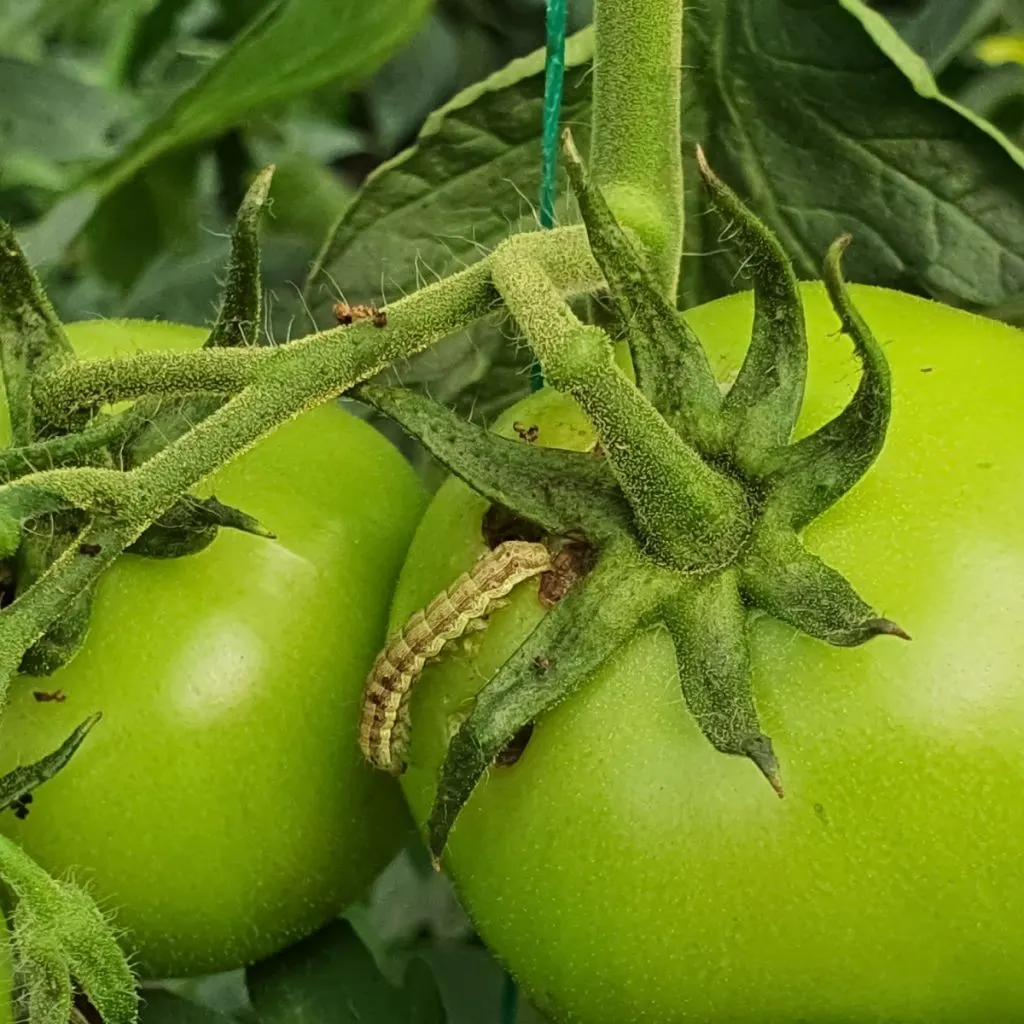
Some varieties of plants require and use the same amount of nutrients that tomato plants do. And because tomato plants are heavy feeders – when they have to compete for nutrients, it can spell trouble for the plant – and your harvest!
Meanwhile, other plants can attract devastating pests as well as disease that can wipe out entire tomato crops. As you can see, knowing which of these plants to keep far away from your plants can be quite helpful – which is exactly why today’s article features 5 such plants to keep far away from your tomato plants this year.
5 Plants To Never Grow Near Tomato Plants
Potatoes
Tomatoes and potatoes grow nothing alike, and yet, they are actually closely related. In fact, they are both direct members of the Nightshade family.
While you might think this should make them perfect for growing together, that actually isn’t the case at all. Potatoes and tomatoes both require the same type of nutrients in order to grow and produce. And since they are both heavy feeders, those nutrients can quickly become depleted from the soil when they grow near one another.
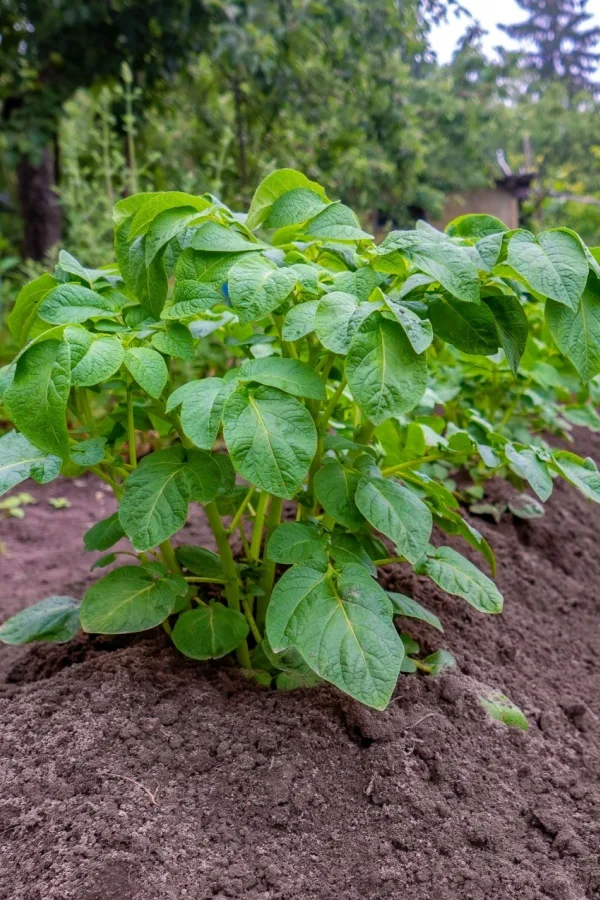
This can cause stunted growth and a reduction in production throughout the growing season for both crops. And not only do these two nightshades compete for nutrients, they also attract the same types of disease.
Blight and wilt are both major diseases that can wipe out entire crops of both tomatoes and potatoes. And growing these varieties right next to each other more than doubles the risk of an infection. Since blight and wilt are both soil-borne diseases, they can also cause problems for many years after an infection as well.
Cabbage
Cabbage is a member of the Brassica family, and although it’s not a fellow family member of tomatoes like potatoes – it can still cause big problems. In this case, it’s because growing cabbage near tomatoes can actually stunt a tomato plant’s growth and reduce its overall fruit production. And by a lot!
Much like potatoes, cabbage competes for the same type of nutrients as tomato plants. But it actually can take them in far better. And when they grow near one another, it’s usually the tomato plants that suffer.
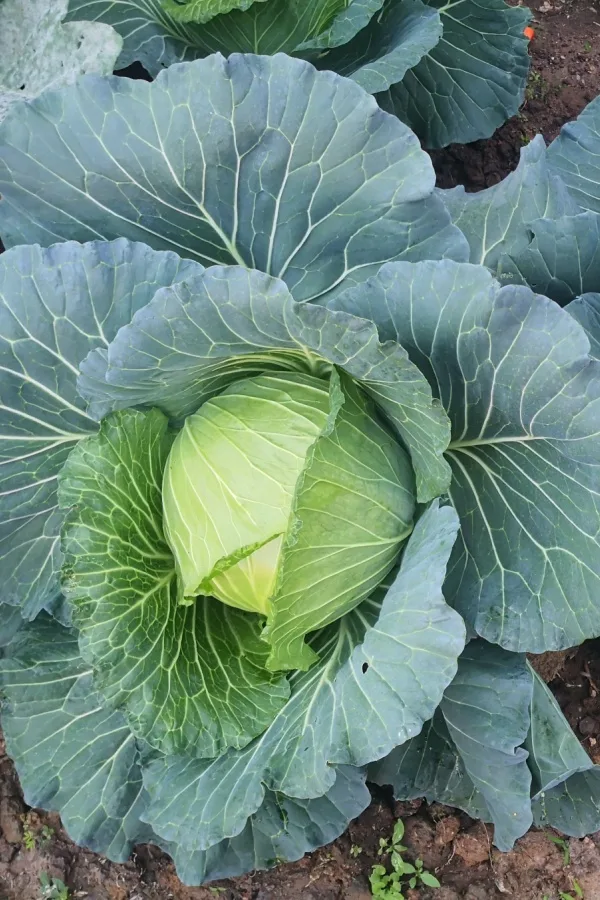
In addition, cabbage plants grow incredibly large root systems. These roots not only fill up the soil space but also take in large quantities of moisture and nutrients from the soil. In turn, making it even harder for tomato plants to get the energy they need.
Sweet Corn
While sweet corn and tomatoes might pair well together in the kitchen, they don’t do so well when planted next to one another in the garden.
First, there’s the issue with the height of mature sweet corn. Depending on the variety, some sweet corn varieties can grow to be around 8 feet tall. This can create a nice sunblock for shorter plants that happen to need a little shade. But for tomatoes, it spells trouble.
Since tomato plants require full sun in order to stay healthy and produce blooms, growing sweet corn nearby actually robs the plants of sunlight. And without proper light, tomatoes have a hard time using photosynthesis to power their growth and crop.
In addition to the physical issues, sweet corn is a magnet for the destructive corn earworm. Not only are the larvae destructive, but as soon as the corn silks start to turn brown, the moths start to look for nearby hosts plants for laying eggs. And you guessed it – tomato plants make the perfect host!
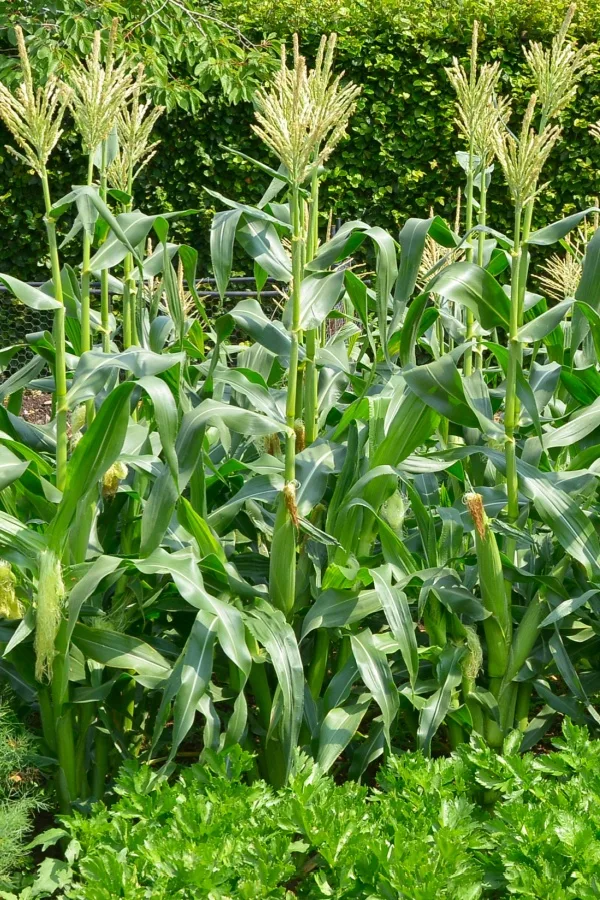
Otherwise known as tomato fruitworm, the larva feeds on the fruit and kernels of both sweet corn and tomatoes. Damage results in ruined stems, foliage, and ears as well as hollowed-out fruits. Which is exactly why you should never plant sweet corn near your tomato plants!
Broccoli
Another member of the Brassica family, broccoli is also a big no-no to plant near tomato plants.
Broccoli is a very heavy feeder and requires plenty of moisture to grow and develop. It has similar nutrient requirements as tomatoes and the two plants compete to pull them from the soil. In addition, similar to cabbage, the roots of the broccoli grow to be massive, often stunting out nearby growth.
Dill
Most herbs grow well around tomato plants. In fact, most are even considered companion crops. But one thing is for sure, that is not the case with dill. Especially as it matures.
Young dill plants growing around tomatoes can actually help to repel pests like aphids. In addition, dill helps to attract beneficial insects like ladybugs, wasps, and praying mantises. However, the same can’t be said for dill plants once they mature.

As soon as dill matures and starts to go to seed, it starts to absorb nutrients in the soil that tomato plants require. This can actually inhibit the growth of nearby tomato plants, causing stunted growth in both the plant and its production of fruit.
Two Great Companion Plants For Tomatoes
Thankfully, it’s not all doom and gloom when it comes to growing other varieties of plants near tomatoes. There are actually some excellent companion crops that actually benefit tomatoes in huge ways. And by simply planting them along with your tomatoes – you can help your plants produce better than ever.
Two of the best when it comes to this mutually beneficial relationship are marigolds and basil.
Marigolds
One of the best companion plants of all for tomatoes is marigolds. These easy-to-grow annual flowers are perfect for growing around the root zone of tomato plants because they work under the soil to protect the plants. But they also work to protect them above ground as well.
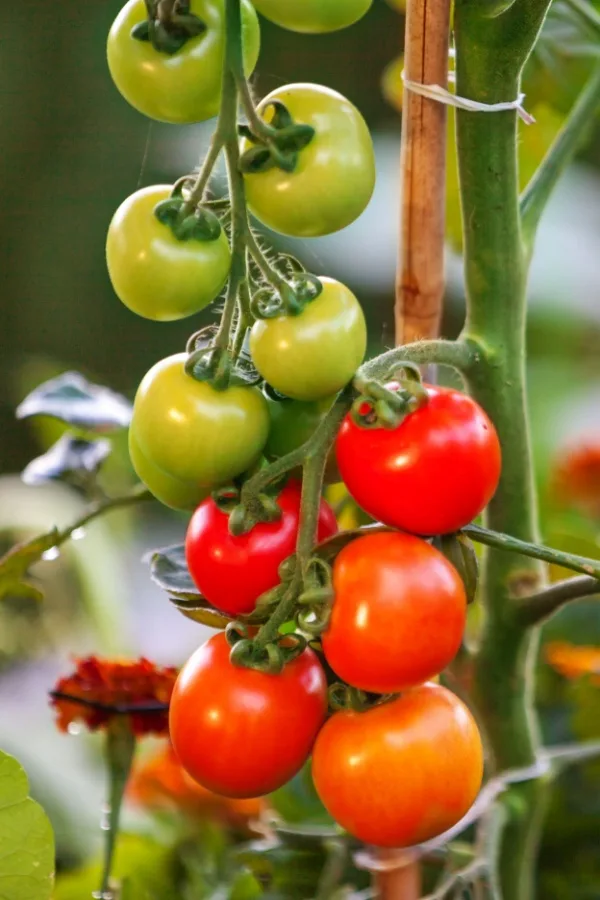
Below the soil, marigolds help to deter nematodes from feasting on the roots of tomato plants. In addition, their strong aroma helps to deter pests like hornworms, whiteflies, aphids, and even larger pests like rabbits and deer – all while drawing in pollinators in droves.
Although all marigold varieties can provide benefits to tomato plants, French Marigold varieties are the best of the best for tomatoes. And like all marigolds, they can grow easily from seed! Product Link: Outsidepride 1000 French Marigold Seeds
Basil
Another great companion crop for tomatoes is basil. This tasty and fragrant herb not only pairs well with tomatoes in the kitchen but also in the garden. See our article: Why To Plant Basil With Tomato Plants
Like marigolds, the strong scent of basil helps to deter unwanted pests and insects. At the same time, many gardeners and chefs alike are steadfast in their opinion that growing tomatoes and basil together actually improves the flavor of the tomatoes.
Here is to planting your tomato plants this year with the right plants – and avoiding a few that can bring harm to your harvest!
I Grow Tomatoes
Follow Our Facebook Page For Even More Great Tomato Growing Tips! I Grow Tomatoes Facebook Page
I Grow Tomatoes is a website created for those who love all things about tomatoes – from planting and growing – to cooking and canning! We publish two articles every week, 52 weeks a year. Sign up today to follow via email! This article may contain affiliate links.
